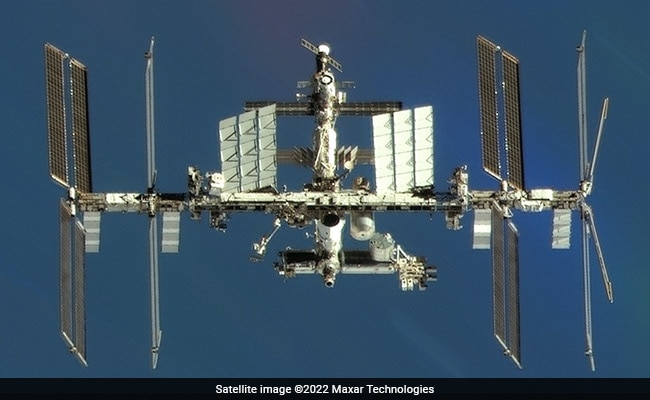Story so far: Veteran American astronauts Sunita Williams and Barry (Butch) Wilmore, are still docked with the International Space Station (ISS) since June 6 after facing delays, space debris threats, helium leaks and technical glitches on the Starliner spacecraft on which they travelled.
The U.S Space Agency — National Aeronautics and Space Administration (NASA) — held a ‘space-to-earth’ news conference with the two astronauts on July 10 to receive an update on their mission’s progress. Both astronauts said they ‘felt confident’ that they could return to Earth on Starliner itself.
Also read | How Boeing can bring NASA’s Sunita Williams, Barry Wilmore back to Earth
“I have a real good feeling in my heart that this spacecraft will bring us home, no problem,” said Ms. Williams, while Mr. Wilmore said, “That mantra you’ve heard, failure is not an option.” He added that both crew members were staying on the ISS to test the spacecraft
NASA along with the space capsule’s manufacturer Boeing is evaluating Starliner’s propulsion system and the five small helium leaks in the service module. The team is conducting ground tests on identical thrusters at New Mexico’s White Sands Missile Range while another investigation is underway at NASA’s Marshall Space Flight Center in Alabama to determine why the propulsion system’s seal failed, leading to helium leaks.
The continued delay in Ms. Williams and Mr. Wilmore’s safe return, which was initially scheduled to begin on June 18, has piqued concerns across the world, including India. Apart from Ms. Williams and Mr. Wilmore, NASA astronauts Michael Barratt, Matt Dominick, Tracy C. Dyson, Jeanette Epps and Russian Cosmonauts Nikolai Chub, Alexander Grebenkin, and Oleg Kononenko are aboard the ISS.
Here’s a look at the attempted launches, what went wrong, and current efforts for the crew’s safe return
Starliner’s attempted launches and success
Sunita Williams, 58, is the pilot of NASA’s Crew Flight Test mission aboard Boeing’s Starliner space capsule. The mission is a joint venture between NASA and American private space players to open up commercial travel to low-Earth orbits and the ISS to more people for scientific and commercial purposes.
United Launch Alliance, a joint venture by Boeing and Lockheed Martin manufactured the Atlas V rocket which transported the astronauts via Boeing’s space capsule Starliner to the ISS. With this, NASA will have a second space capsule option (apart from SpaceX’s Crew Dragon), which has a crew module which can house up to seven astronauts and a non-reusable service module which houses the equipment and systems (air, temperature controls, water supply etc) needed for a stay in space.
The first crewed test flight of Starliner with the above-mentioned astronauts was scheduled for May 6 for a week-long stay at the ISS. However, the flight was scrapped less than two hours before the launch after an issue was detected in an oxygen relief valve of the rocket’s second stage. All launch activities were suspended and the flight was postponed to May 17.
A helium leak was detected in a thruster in Starliner’s service module, further postponing the launch to June 1. On that day, the ground launch sequencer, the computer which launches the rocket, triggered an automatic hold stopping the countdown clock three minutes fifty seconds before the launch.
On June 5, Starliner was finally launched successfully from NASA’s Space Launch Complex-41 at Cape Canaveral Space Force Station in Florida and the two astronauts docked with the forward-facing port of the ISS. During their week long stay, the astronauts were tasked with verifying if Starliner was performing as intended by conducting tests on the various control systems and manoeuvring the thrusters. Prior to take-off, a small helium leak was noticed in the space capsule’s propulsion system but not deemed serious.
What went wrong?
En-route to the ISS, four more small helium leaks sprung up. Both NASA and Boeing officials reviewed flight data to find out the cause of the leaks. On June 6, NASA’s Commercial Crew Program manager Steve Stich admitted that similar thruster issues were revealed during the spacecraft’s uncrewed test flight in 2022, adding, “thought we had fixed that problem,” at a press conference.
The undocking and return journey of Starliner, which was scheduled for June 18, was postponed to June 22, then June 25 and later to July 2.

This handout image courtesy of Maxar Technologies taken on June 7, 2024 shows the Boeing Starliner spacecraft docked with the International Space Station’s (ISS) forward port on the station’s Harmony module.
| Photo Credit:
–
Mr. Stich opined that thruster issues may have been caused overheating when fuel was burned during the space capsule’s rendezvous with the ISS. According to CNN, the Starliner’s service module has 28 reaction control thrusters, of which five have failed during flight. Four were brought back online eventually.
The Starliner, which had its first uncrewed Orbital test flight in 2019, faced a software glitch, leaving the space capsule in the wrong orbit before it returned to ground without docking with the ISS. In 2022, the space capsule successfully conducted its first uncrewed test flight when it docked with the ISS and then undocked four days later to return to Earth. This flight too faced issues with the thrusters.
What is causing the delay?
Apart from technical issues, the crew also faced a debris collision threat on June 28. The US Space Command alerted the six astronauts onboard the ISS to execute ‘safe haven’ procedures i.e. crew members board the spacecraft they arrived in, in case an emergency departure is needed. This was necessitated after a defunct Russian satellite (RESURS-P1) broke into more than 100 pieces of debris in an orbit near the ISS. Ms. Williams and Mr. Wilmore were forced to board the Starliner to take shelter for an hour before they resumed their activities on the ISS.

This screengrab from NASA shows astronaut Sunita Williams (seated L) and Butch Wilmore (seated R) posing with the crew of the International Space Station (ISS) after the docking of the Boeing Starliner on June 6, 2024.
| Photo Credit:
HANDOUT
On July 2, NASA said that the spacecraft was in good shape to remain docked to the ISS for over 45 days (its upper limit), giving the ground teams of NASA and Boeing time to conduct simulations and tests on the thrusters. Analysis is also underway to determine why several helium leaks have arisen in the capsule, said NASA. Currently, NASA has not set any end date to the mission, making the extension indefinite.
How will the crew return?
In the July 10 press conference, NASA has said, that if absolutely necessary, Starliner would be capable of returning to Earth – acting as an escape pod. Moreover, NASA also has the option of ferrying Mr. Wilmore and Ms. Williams to Earth aboard Crew Dragon. The SpaceX spaceship transported four astronauts to the ISS in March and is capable of fitting more people in case of an emergency. However, such an option has would be a last resort in case Starliner is deemed non-functional.
But NASA has reiterated its confidence in the Starliner to return the duo, dropping the option of using the Crew Dragon.













